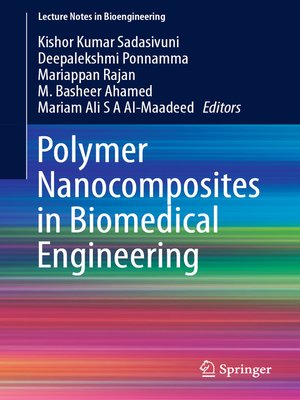Polymer Nanocomposites in Biomedical Engineering
ebook ∣ Lecture Notes in Bioengineering
By Kishor Kumar Sadasivuni

Sign up to save your library
With an OverDrive account, you can save your favorite libraries for at-a-glance information about availability. Find out more about OverDrive accounts.
Find this title in Libby, the library reading app by OverDrive.



Search for a digital library with this title
Title found at these libraries:
| Library Name | Distance |
|---|---|
| Loading... |
This book presents a thorough discussion of the physics, biology, chemistry and medicinal science behind a new and important area of materials science and engineering: polymer nanocomposites. The tremendous opportunities of polymer nanocomposites in the biomedical field arise from their multitude of applications and their ability to satisfy the vastly different functional requirements for each of these applications. In the biomedical field, a polymer nanocomposite system must meet certain design and functional criteria, including biocompatibility, biodegradability, mechanical properties, and, in some cases, aesthetic demands.
The content of this book builds on what has been learnt in elementary courses about synthesising polymers, different nanoparticles, polymer composites, biomedical requirements, uses of polymer nanocomposites in medicine as well as medical devices and the major mechanisms involved during each application. The impact of hybrid nanofillers and synergistic composite mixtures which are used extensively or show promising outcomes in the biomedical field are also discussed. These novel materials vary from inorganic/ceramic-reinforced nanocomposites for mechanical property improvement to peptide-based nanomaterials, with the chemistry designed to render the entire material biocompatible.
The content of this book builds on what has been learnt in elementary courses about synthesising polymers, different nanoparticles, polymer composites, biomedical requirements, uses of polymer nanocomposites in medicine as well as medical devices and the major mechanisms involved during each application. The impact of hybrid nanofillers and synergistic composite mixtures which are used extensively or show promising outcomes in the biomedical field are also discussed. These novel materials vary from inorganic/ceramic-reinforced nanocomposites for mechanical property improvement to peptide-based nanomaterials, with the chemistry designed to render the entire material biocompatible.







